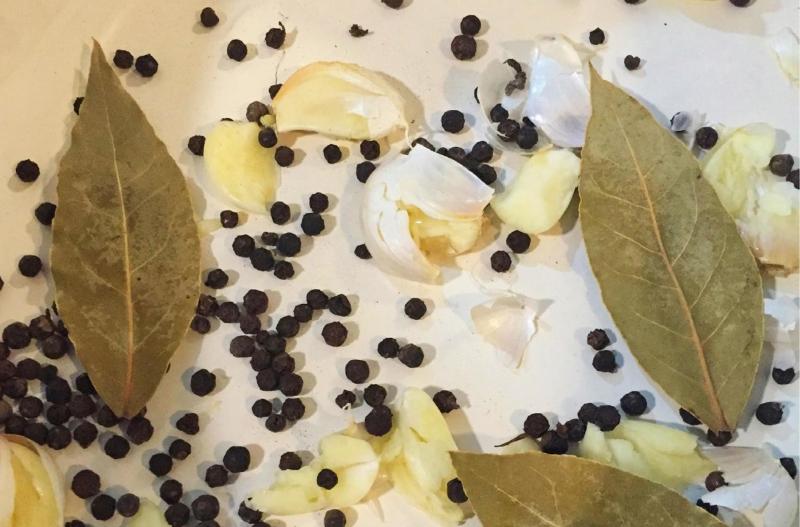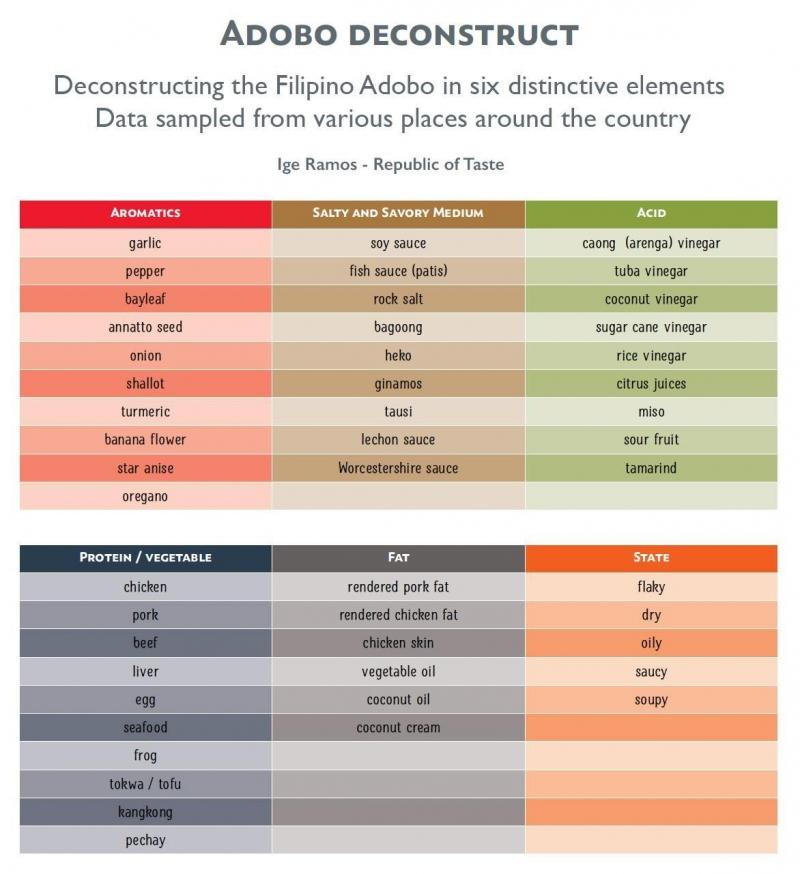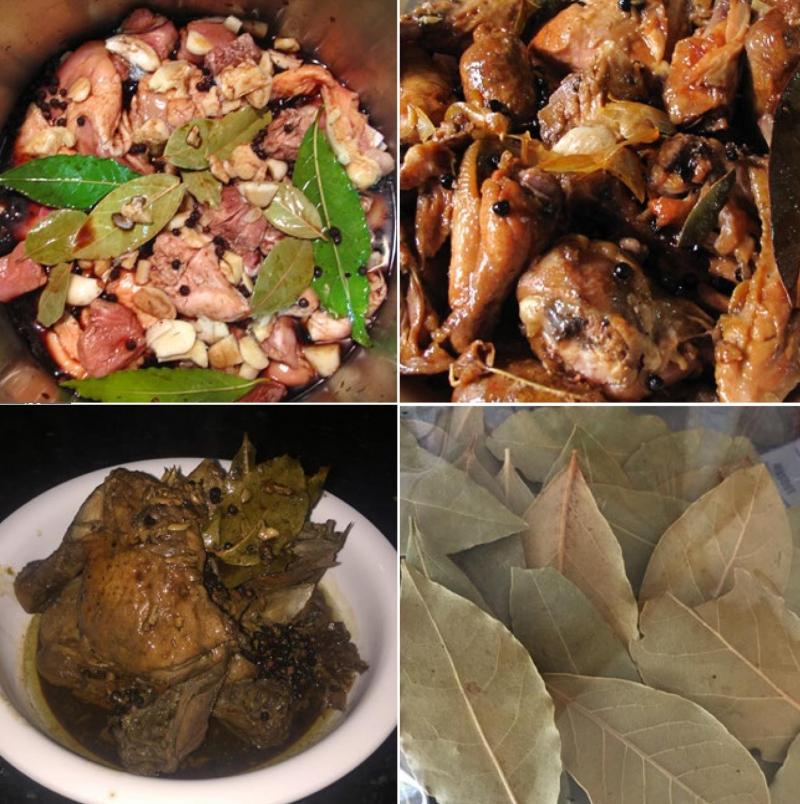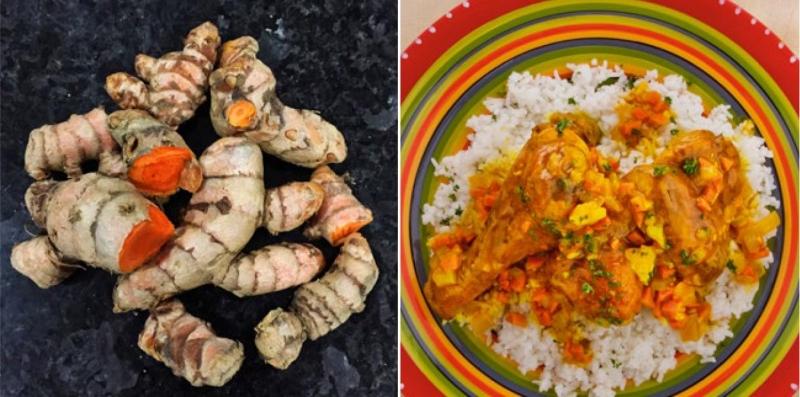Understanding adobo
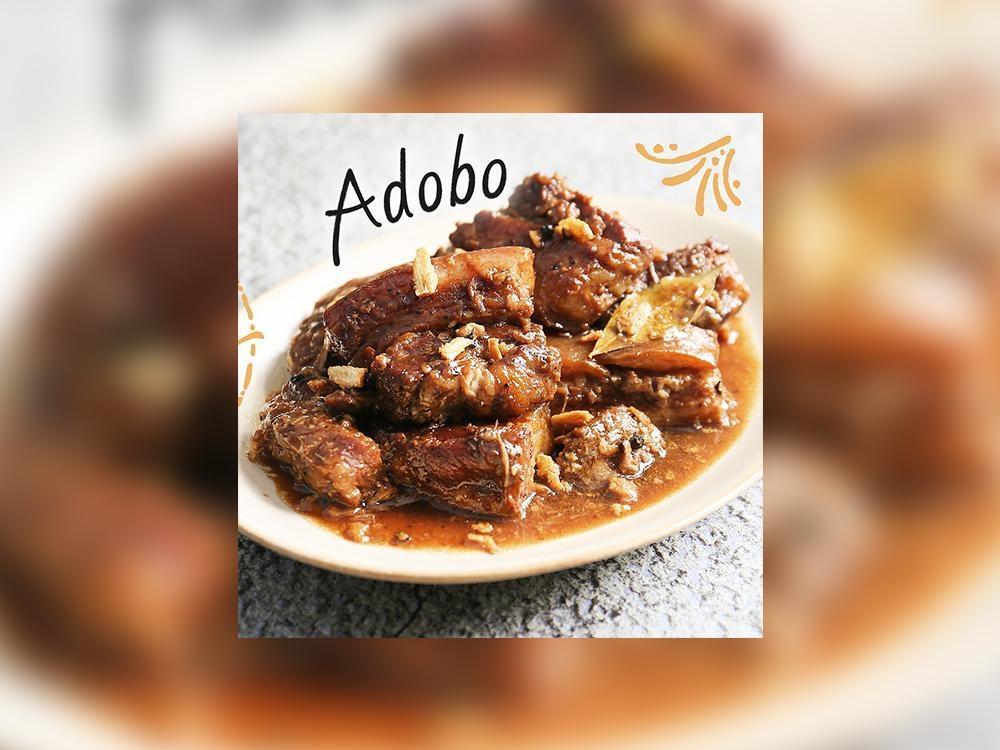
It's all about intuition, muscle memory, and taste, which is imbedded in our DNA.
Take for example, the “adobong paspasan” or the quick adobo. It is perfect when confronted with unexpected, though welcome visitors. Traditionally, the designated cook in the house kills the chicken, dresses it, and then chops it up. Using time-tested alchemy learned from revered ancestors, a sorcerous potion of soy sauce and vinegar, invested with the holy trinity of garlic, pepper, and bay leaves, suddenly yields a magical dish that warms the heart and satisfies the palate.
Classic adobo aromatics: bay leaf, garlic, and pepper
This default recipe is so alluring that most Filipinos I know would "adobo" everything in sight, from chicken to pork, beef, frogs, vegetables like kangkong, Bok choi, and purslane, and even fish and seafood. It is also used as a marinade for barbecues and sauces.
Looking at some of the cooking techniques of our food, it all boils down--no pun intended--to adobo, where protein is braised in a mixture of a salty-savory medium and an acid or souring agent, flavored by strong aromatics, while finally arriving at various states from flaky dry to oily, saucy, and soupy.
Adobo is not just a dish, it's a cooking process.
However, adobo is also the most misunderstood Filipino dish, wherein Filipinos all have their own opinion on which one is the best.
Deconstructing adobo chart
In July 2021, the Department of Trade and Industry, through its agency, Bureau of Philippine Standards created a technical committee on which variety should be considered as a national "standard" when it comes to adobo. However, the agency immediately received a backlash from netizens which resulted in them having to clarify that the standards were not mandatory and would only “define what we will promote internationally.”
As there are thousands of islands in the Philippines, it follows that there are also hundreds of local and regional variations of adobo using a wide array of ingredients that in themselves reveal a history of their own.
Adobo for overseas Filipino workers has a strong cultural function and is used as social currency.
I am privileged to have received an invitation to a tasting workshop on Adobo at the Ubud Food Festival in Bali, Indonesia this coming June 24. The festival's theme this year is Heroes. It is therefore appropriate that I will be discussing the life and food of Teresita Mama Sita” Reyes and Maria Y. Orosa, our foremost Filipino culinary heroes, but who are virtually unknown in the region.
Adobong pula
For the tasting workshop, I propose to make basic adobo marinade for chicken barbecue or Filipino sate ayam and classic chicken adobo, where I will discuss the Indonesian influence on the most iconic Filipino restaurant in Manila: The Aristocrat. Established by Engracia Reyes in 1928 during the American Colonial Rule, she was assisted by her daughter Teresita, later known as Mama Sita.
Context is key when I will discuss the comparative gastronomies of the two countries by acknowledging the Indonesian names of the dishes beside its popular name in the Philippines.
The best-selling item in The Aristocrat is the chicken barbecue (sate ayam), served with Java sauce (kecap manis), Java rice (nasi kuning tumpuk), and achara: pickled grated green papaya (acar). Few Filipinos are aware of this connection, but somehow, Java sauce and Java rice are stuck in the contemporary Filipino's consciousness as part of our celebratory food. It's comforting to discover that the Balinese babi kecap (pronounced ketchup) is quite like our adobo. Maybe I will do some more sleuthing to find out more about this.
The other adobo recipe I will sample for the international guests in Ubud is the pork adobo recipe of Maria Y. Orosa. Orosa, apart from being a food technologist was a war hero. She graduated with a bachelor's and master's degree in Pharmaceutical Chemistry from the University of Washington in 1919. In 1922, she returned to the Philippines to serve as the chief scientist in the Plant Division of the Bureau of Science. She is also the acknowledged inventor of the banana ketchup. I will be cooking the 1928 recipe contained in her book. Her adobo is made with fatty pork belly which is cooked very slowly in vinegar and aromatics until all the pork fat is rendered. Remember, fat is a flavor vector. Fat is what makes adobo delicious. This was a popular recipe during World War II especially as there was canning instructions at the end of the recipe.
Adobo sa dilaw
And the final one is adobo sa dilaw (turmeric adobo). The town of Kawit, Cavite (the site of the declaration of independence against Spain in 1898) holds a special place in the country's history as the birthplace of the Republic and of Gen. Emilio Aguinaldo (the first Philippine president). Adobo sa dilaw (or yellow adobo) was brought to Kawit from Taal, Batangas, when the general married his second wife, Maria Agoncillo of Taal, Batangas Province. According to chef Ginny Villar, the Taal version is always served on the dry side. However, it's a different story in Cavite. Because Caviteños prefer “masarsa” or saucy adobo, there's a thick, rich golden sauce made from turmeric, chicken liver, extra broth, and breadcrumbs.
The Ubud Food Festival will run from the 24th to the 26th of June 2022 in Bali, Indonesia. Representing the Philippine delegation in the festival are: co-founder of Open Knowledge Kit and community organizer Celina Agaton, Ritual's Bea Misa Crisostomo, mixologist Kalel Demetrio, and yours truly. For more information, check out the official website: www.ubudfoodfestival.com.




